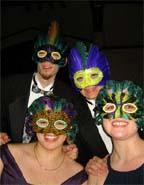
In her 1999 book The Women Who Wrote the War, author Nancy Caldwell Sorel tells the stories of a dozen women reporters who dodged bullets and defied orders to scoop their competitors during World War II. With an attentive eye to historical detail, Sorel skillfully weaves multiple narratives of women based in the European and Pacific theaters to reveal a new perspective of the “good war.”
Nearly all of the women in the book reported as officers of the U.S. army, but not all were Americans. Several entered journalism at small-town newspapers, moving on to Columbia Journalism School or larger publications like the New York Herald Tribune or Life magazine. A few women were born in Germany or Russia, and most found their way into the U.S. press corps by writing for bureaus in Berlin, Paris, or London.
All of them wanted a piece of the biggest story of the century, and those fortunate enough to obtain the necessary military papers became members of the Women’s Auxiliary Army Corps (WAAC), becoming known as “Wacs.” The correspondents held the rank of “captain” so that if they were captured by the enemy, they would not be viewed as spies. Sorel notes that the rank, while only symbolic, meant a lot to these women because it made them look and feel professional.
Several women had reported on the Spanish civil war in the 1930s, and a few had covered conflicts in previous decades. But by 1942, when the U.S. entered the war, woman correspondents faced resistance from military commanders forced to put up with them and male reporters who resented women invading their realm. Woman reporters were not welcome, as several executive orders from Generals Patton and MacArthur made clear. Once they arrived in Europe, and later the Pacific, these women had to maneuver through strict military regulations to get their stories.
All reporters had certain rules to follow, but woman reporters faced even more red tape in various forms. They were restricted from reporting near the front, while male reporters usually could slip through. Military commanders worried about the heat they’d have to take if a woman was killed in action.
Despite the risks to their careers, and often, to their lives, the most successful reporters got their stories by bending or breaking regulations. Women who were audacious enough to break the rules often paid the price by losing their official accreditation, thus barring them from reporting for weeks or months. It was these women who witnessed pivotal events of the war, often scooping the entire press corps, to the chagrin of many male reporters.
Margaret Bourke-White, the famous Life magazine photojournalist, was the only reporter present when the Nazis invaded the USSR on June 22, 1941. Lee Miller, single-handedly covered the battle for Saint-Malo, a French seaside town under siege in August 1944. Patton’s troops had secured Brittany’s entire northern coast except for this town; she later wrote gleefully, “I was the only photographer for miles around and I now owned a private war.”
Like the GIs who featured so often in their stories, woman reporters carried their own weight, lugging heavy typewriters and writing supplies. They contradicted the conventional wisdom that women were too fragile for war. Bourke-White always carried five cameras and several cartons of film. Dickey Chapelle, an ambitious 25-year-old photographer from Milwaukee, managed to sneak into Iwo Jima’s front via a transport ship only after spending several months photographing gory amputations and surgery.
Although woman reporters proved their courage and toughness many times, many of them still enjoyed the attention paid to them by exhausted, wounded soldiers overjoyed to see an American woman. They were serious professionals, but after long months spent eating K-rations, more than a few of the women grabbed the chance to dress up and eat in style. One woman managed to keep her brunette locks dyed blonde through the duration of the war. Not surprisingly, some male colleagues accused women of seducing their interview subjects with their feminine wiles. One man complained loudly during a makeshift Christmas dance, “Can I dance with a GI? Can you? Course not. But that’s the way a dame gets stories.”
This book’s only failing is its attempt to tell so many stories, a problem that Sorel acknowledges in her preface. She wants readers to appreciate the range of her subjects’ talents and achievements, but even at 398 pages, the book cannot fully explore the lives of these intriguing women. At best, Sorel can only introduce us to them and to their writing, which she presents in lengthy excerpts, allowing the women to tell the story in their own words.
Still, their articles from various fronts–in Guam, the Philippines, Paris, Czechoslovakia, Berlin–more than compensate for the occasional disjointedness. The author pieces together the women’s personal tales in lucid prose that doesn’t glorify the women. She notes their personal failings and biases, yet still leaves the reader astonished at their tenacity and dedication to the task of reporting the war.

